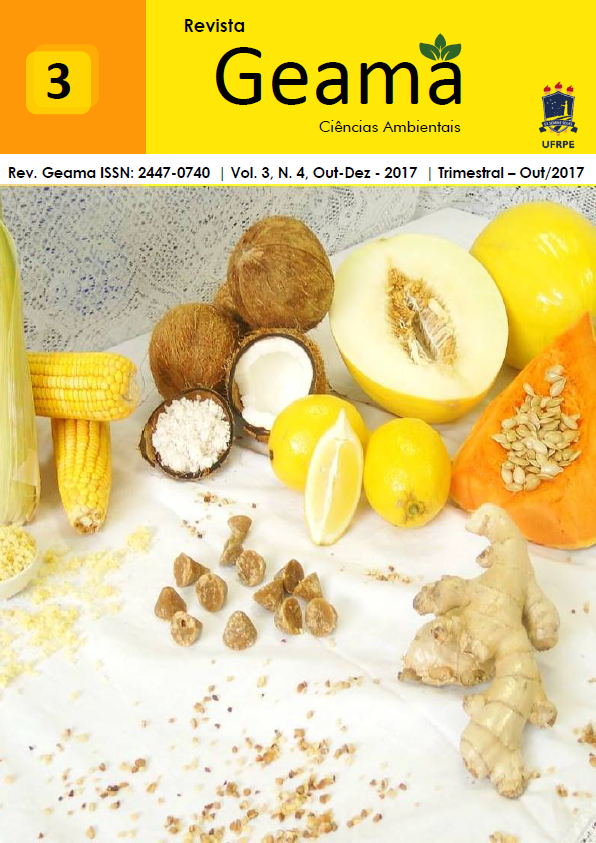ENERGY BALANCE IN AREAS WITH DIFFERENT LAND USES IN THE CHAPADA DO ARARIPE
Palavras-chave:
Landsat 5. SEBAL. Remote sensingResumo
The objective of this work was to assess the energy balance components such as net radiation and sensible, latent and soil heat fluxes by using the Surface Energy Balance Algorithm – SEBAL – through analyses of 13 Landsat 5-TM and Landsat 8-OLI images. The images were obtained from Image Processing Division (DGI) of the National Institute for Space Research (INPE), Brazil, and from the United States Geological Survey (USGS). The meteorological data were obtained from the Barbalha automatic station provided by the National Institute of Meteorology (INMET), Brazil. The study area is located around the Chapada do Araripe (Araripe Plateau) protected forest. Two points with distinct land uses, characterized by irrigated and bare soil areas, were chosen. The net radiation values for the irrigated area ranged from 600.0 to 727.7 W m-2 between the years 1993 and 2014. The soil heat flux values for the bare soil area increased from 52.0 to 94.9 W m-2. The majority of the analyzed images showed sensible heat flux values below 300 W m-2 for the bare soil area. In all images, the average values of latent heat flux were greater than 500 W m-2 for the irrigated area. It is concluded that deforestation processes and intensification of agricultural exploitation that the plateau has been suffering over the years are the main reasons for decreasing latent heat flux values in bare soil areasDownloads
Downloads
Publicado
Como Citar
Edição
Seção
Licença
As Políticas Culturais em Revista aplica a Licença Creative Commons Atribuição-Não Comercial 4.0 Internacional (CC BY-NC-SA 4.0) para os trabalhos que publica. Esta licença foi desenvolvida para facilitar o acesso aberto - ou seja, o acesso livre, imediato, e a reutilização irrestrita de trabalhos originais de todos os tipos. Nossos autores mantêm os direitos autorais mas, sob essa licença, concordam em deixar os artigos legalmente disponíveis para reutilização, sem necessidade de permissão ou taxas, para praticamente qualquer finalidade. Qualquer pessoa pode copiar, distribuir ou reutilizar esses artigos, desde que o autor e a fonte original (Políticas Culturais em Revista) sejam devidamente citados.
![]()






